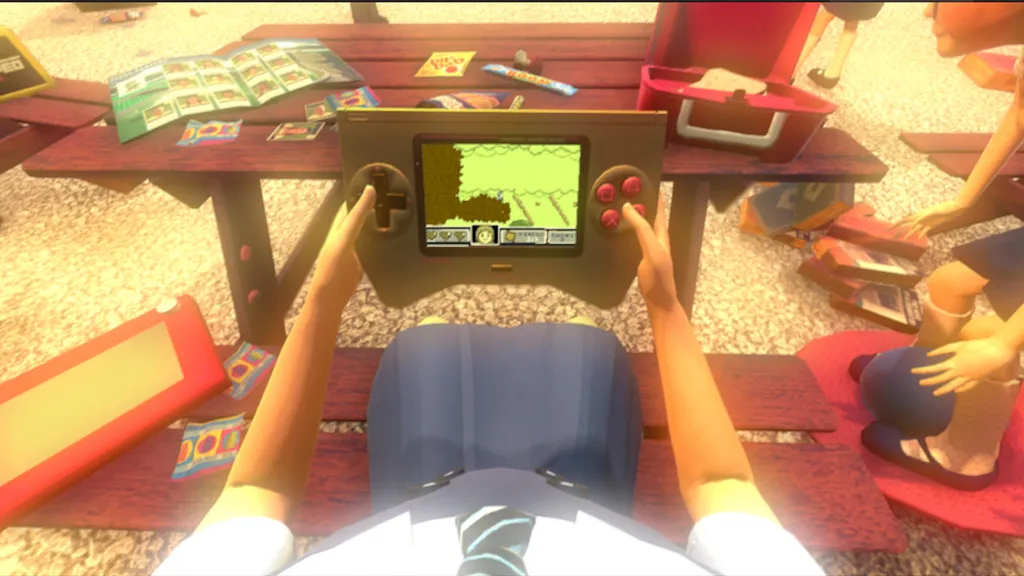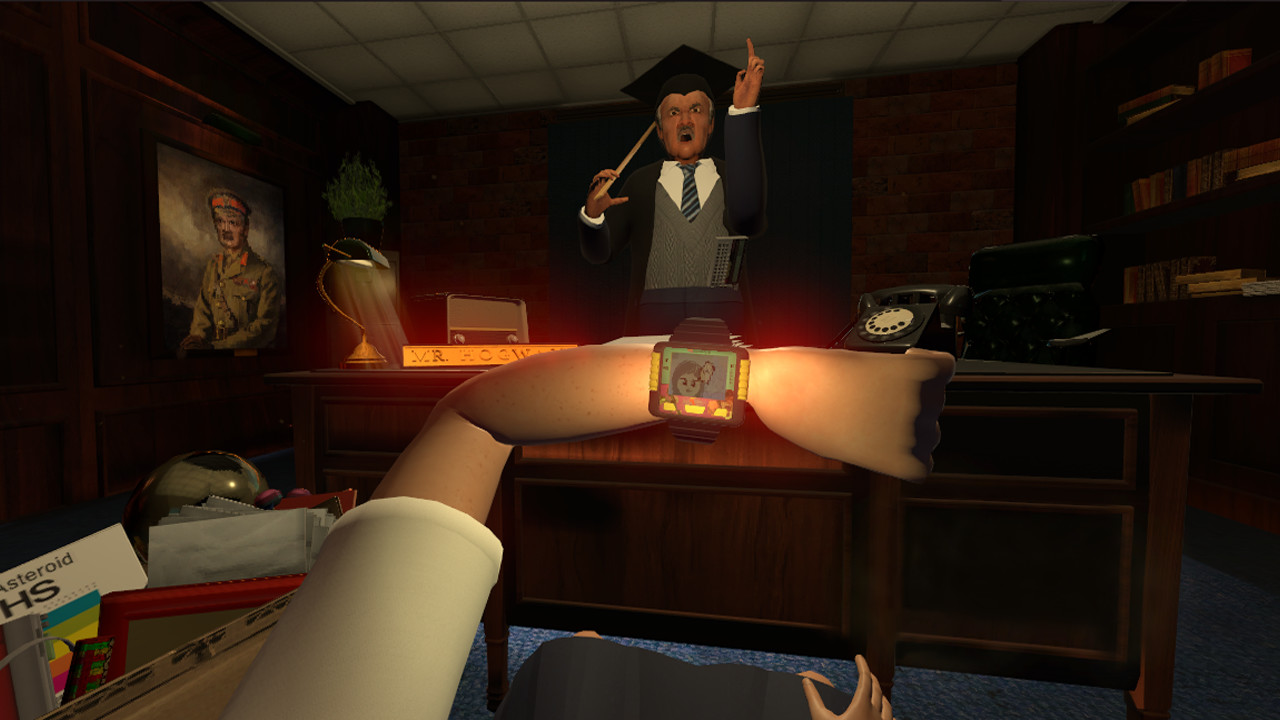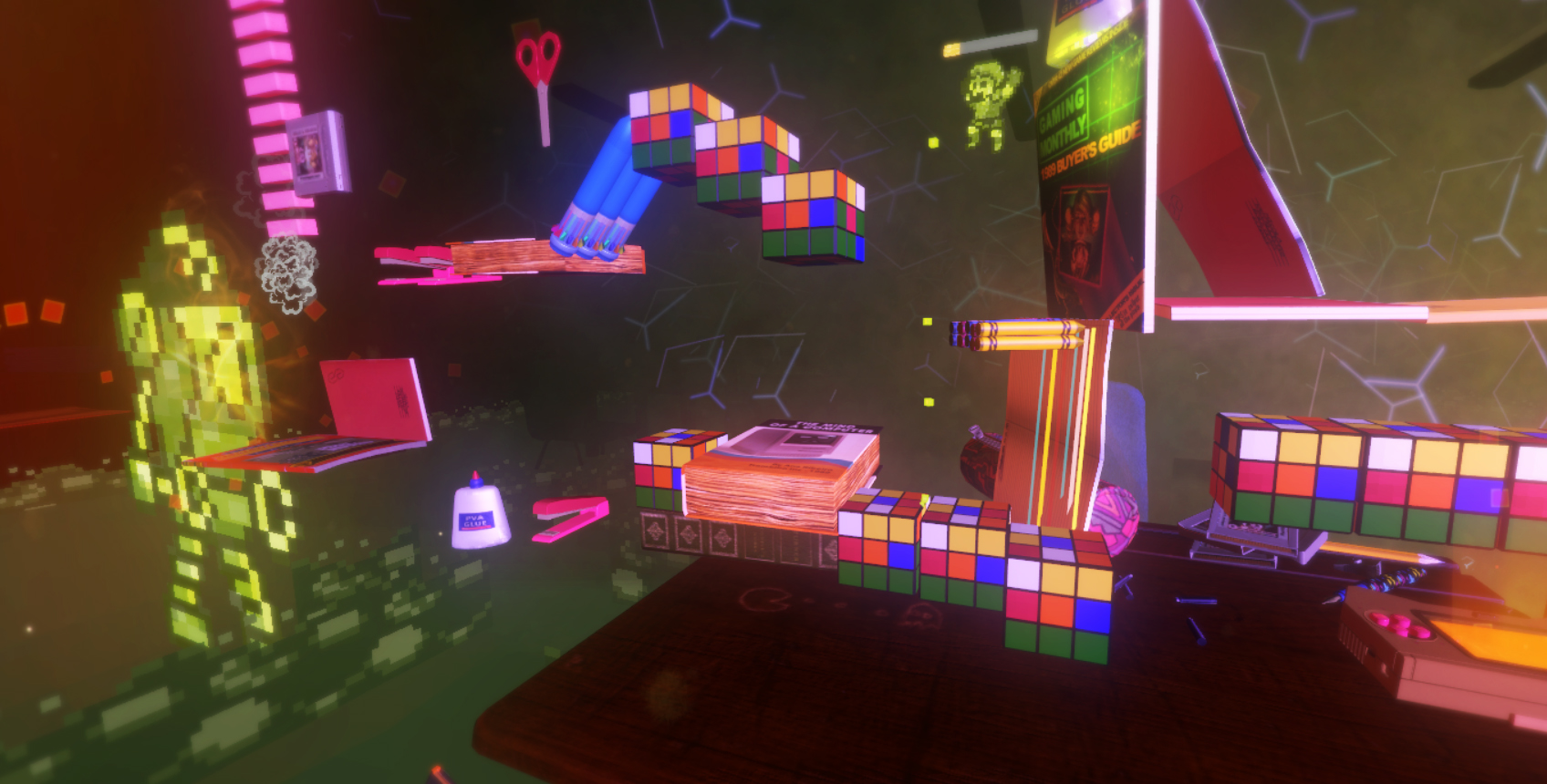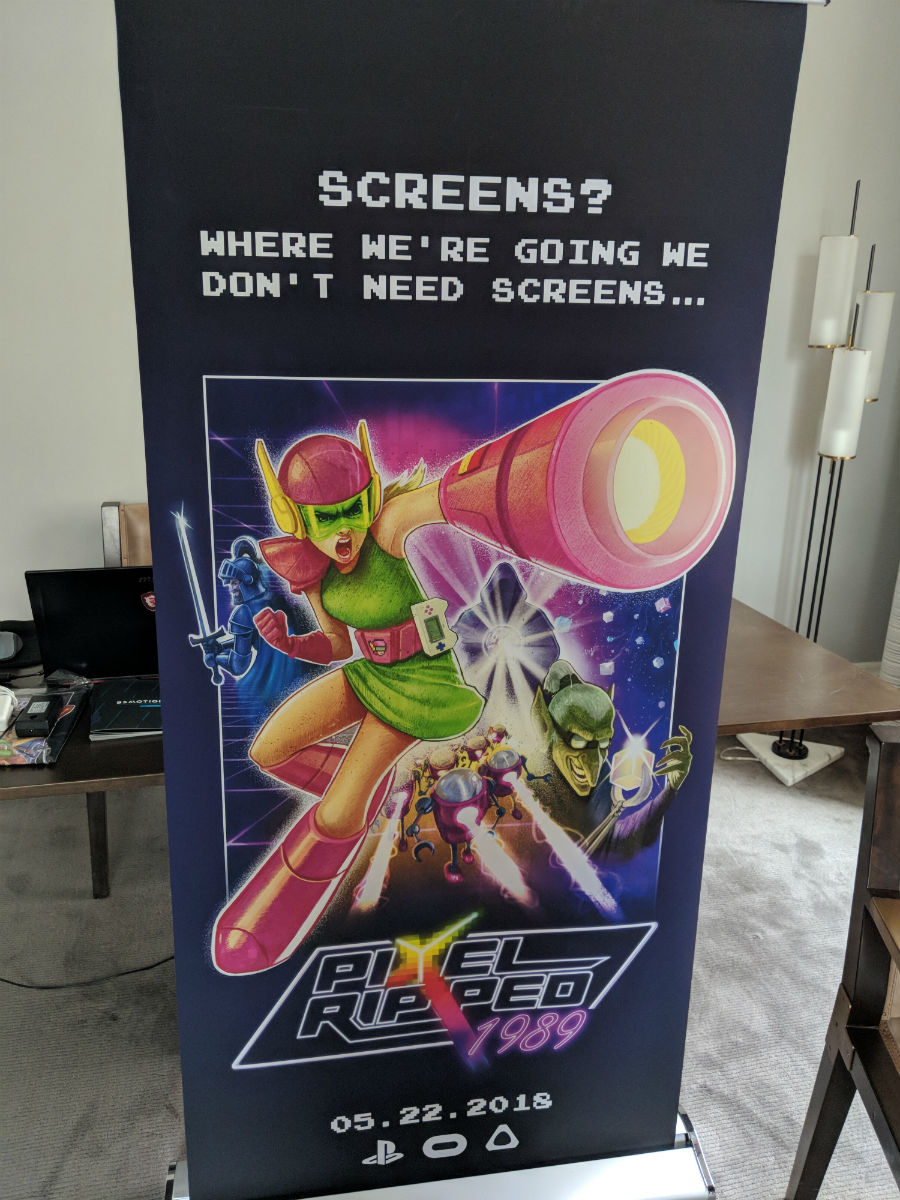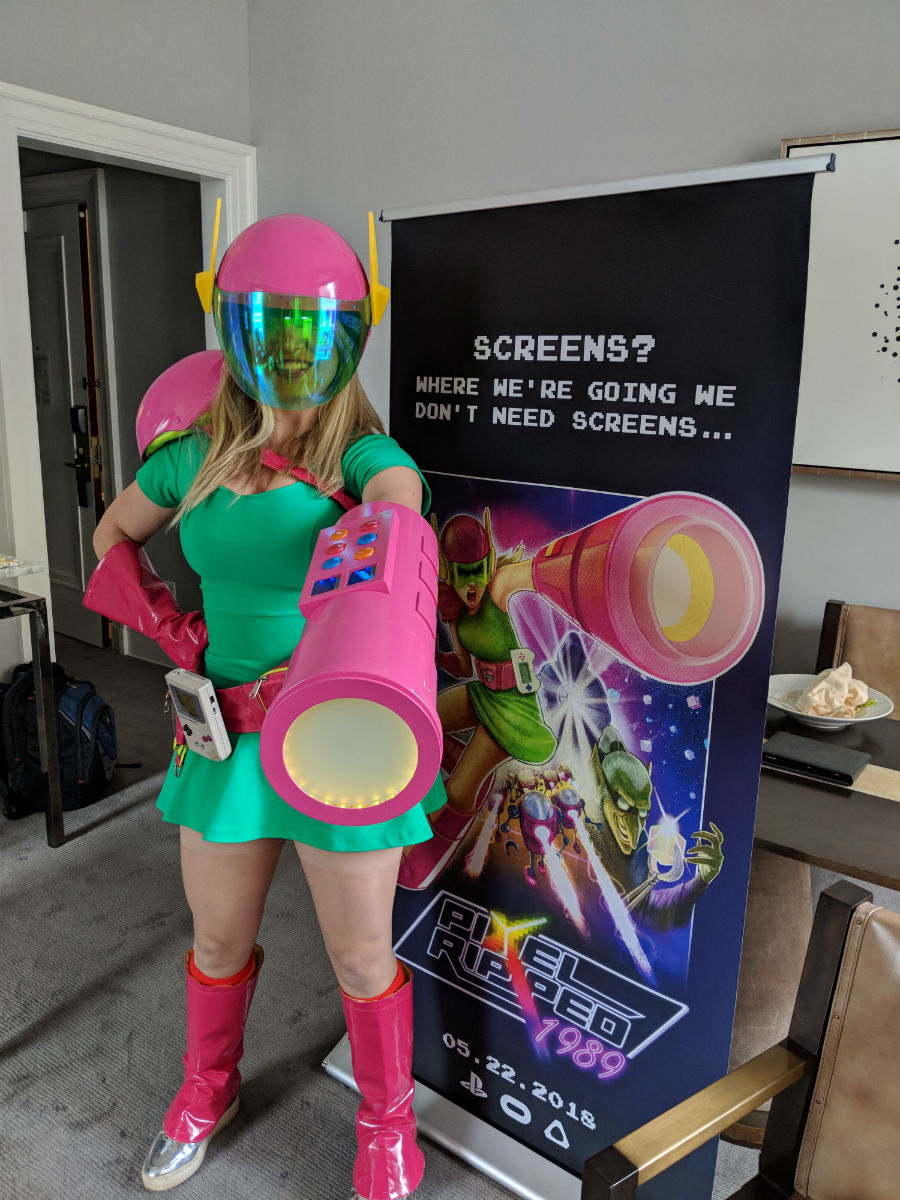From the moment I walked into the hotel suite for my Pixel Ripped 1989 appointment at GDC 2018, I immediately recognized that this wouldn’t be your normal, everyday meeting.
Before I had time to take in my surroundings, I heard a thick Brazilian accent from the next room over: “Sorry, I was eating a hamburger.” Then suddenly a woman in full, bright green and pink cosplay gear walked out into the main living area. I reached out my hand to shake and she embraced me with a strong hug instead.
“Welcome!” exclaims Ana Ribeiro, Creative Director on Pixel Ripped 1989. “Would you like some Brazilian candies?”
Since Pixel Ripped 1989 is unlike any game I’ve ever played, it’s fitting then that its GDC meeting would follow suit. According to Ribeiro, this concept has been bouncing around in her head ever since she was a little girl playing Gameboy in class when she isn’t supposed to or playing Nintendo at home with her brothers.
The concept for Pixel Ripped 1989 (the VR game) is that you control a similarly little girl in school named Nicola. She’s a great gamer and the world of Pixel Ripped (her handheld 2D game) calls on her to take control of its main character — Dot. Both the digital 2D and physical 3D world are at risk here, so the stakes are higher than ever. It’s a game within a game in VR and it sounds confusing, but it just makes sense once you’re inside the world.
What Ribeiro realized though is that for all of the countless retro indie games on the market today, none of them are about what goes on around you while you’re playing.
If you think back to any of your favorite gaming memories, you don’t just remember the game itself — you remember where you were and what you were doing at the time too. So by making Pixel Ripped 1989 a VR game, Ribeiro is able to convey the entire gaming experience from the screen to the world around you. And because its a retro-ified VR experience, there is plenty of dimension-crossing action and pixelated visuals.
During my demo I got to play the first two levels, stopping right before the second level boss. The first level has Nicola in class playing Pixel Ripped when the teacher isn’t watching. This creates an interesting gameplay loop in which you’ve got to keep an eye on your surroundings and make sure you’re not being watched, while also trying not to die in the game itself. If your childhood was anything like mine, this probably rings a few bells for your past. The second level’s environment was a bit more relaxed with Nicola just outside during recess without any other stresses controlling the pacing.
On a moment-to-moment gameplay basis, you’ll spend almost the entire game looking down between your hands (while wearing a VR headset) as if you’re holding a Gameboy. This is great for immersion, because it really did make me feel like I was playing a little handheld game, but it’s not the best VR design. The issue is that just in my 45 minute demo it was already starting to hurt my neck and there didn’t appear to be a way to snap the angle upwards so you’re not craning down.
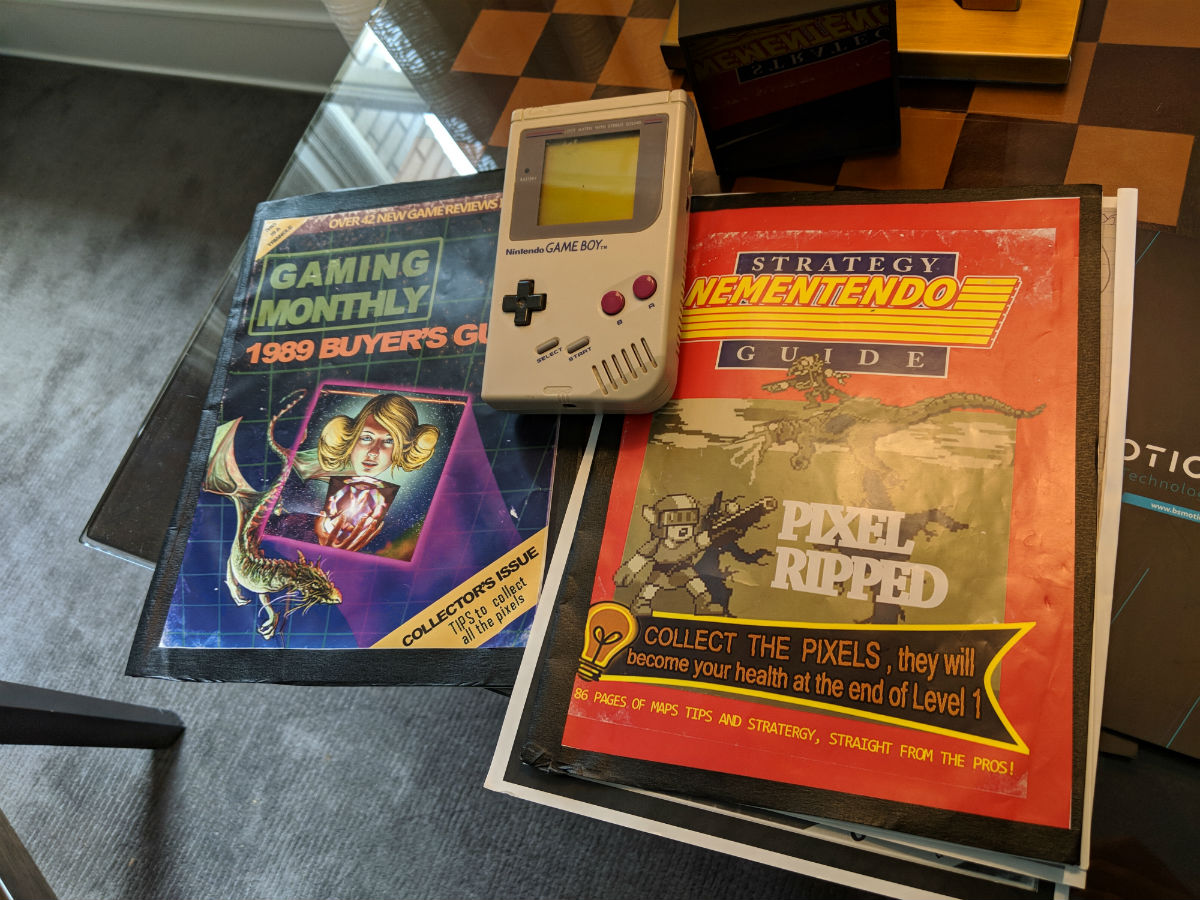
Another disappointing aspect is that, despite my demo taking place on an Oculus Rift with Oculus Touch, I may as well have been using an Xbox One controller. This game started development back on the DK1 so it’s not too surprising that motion controllers are an afterthought in its design, but not being able to reach out and interact with the world around me feels like a major missed opportunity.
Luckily, the 2D game (Pixel Ripped itself) is actually quite good. The fast-paced 2D platforming has strong Mega Man undertones with pixel perfect jumping and dashing segments. You collect pixels over the course of a level and as you amass enough units, your character sprite slowly morphs and becomes more advanced looking. If you take a hit, you lose all your pixels just like Sonic loses his rings. This creates a great dynamic that keeps everything extremely challenging without feeling too cheap or unfair.
As you can tell from the photos I took above during my demo, Ribeiro is taking this game very seriously. Dot (and by extension Nicola) are just as much a part of her identity as her history with video games is. While I do have my reservations as of now, if just a fraction of Ribiero’s passion comes through in the final product then I think we’ll absolutely be in store for a game worth playing.
Pixel Ripped 1989 is coming to PSVR, Rift, and Vive on May 22nd after being in development for around four total years — perhaps even longer if you count the dreams and visions its creator has had in her life. Let us know what you think of the game so far down in the comments below!

